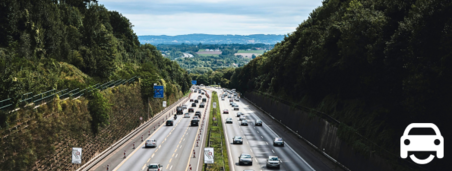Cut your fuel bill by 30%! Our fuel-saving top tips and hacks

Are you tired of spending a fortune at the pump? In today's fast-paced world, fuel costs can quickly eat into our budgets. But fear not, because there are numerous ways to save big on your fuel expenses. In this article, we'll explore a variety of practical tips and strategies that can help you slash your fuel bills by a whopping 30%!
1. Change how you drive
- Slow down – Cutting your motorway speed from the legal limit of 70mph to 55mph can reduce consumption by as much as 25 percent.
Be smooth - Be gentle with the throttle and brake, use moderate acceleration. Braking unnecessarily wastes energy. Look further ahead and leave bigger gaps to maintain steady momentum rather than constant breaking and accelerating which uses more fuel.
Change up early – Many modern cars have Eco driving modes, use these. If not, try to use as little acceleration as possible and if you are driving a manual car, change up earlier than you normally would; being in a higher gear means less load on the engine, and reduced fuel consumption.
Use Stop/Start – Many modern cars can automatically switch engines off at traffic lights and when in traffic, this also helps reduce emissions. Make sure you use this feature. If your car doesn’t have it, get into the habit of manually switching off your car at longer hold traffic lights.
- Plan your drive – Stop-go driving in traffic uses more fuel. Plan your journey before leaving home, avoid peak times if possible, and use apps like Google Maps and Waze even if you know where you’re going, as they will try to reroute you around traffic congestion. Think ahead about parking; avoid driving around aimlessly looking for spots.
- Switch off the air-con – Keeping the air conditioning on in your car can increase your fuel consumption by 8-10 percent.
DO NOT DO THIS - Don’t follow these myths about fuel-saving driving techniques.
- Do not switch off the engine while moving. This is very dangerous as you’ll lose the power steering and servo assisted brakes, as well as the additional driver’s aid systems on board. You also risk engaging the steering lock.
- Do not coast by putting the clutch down or selecting neutral gear in a manual car. The car actually goes into idling mode and behaves as if it’s stationary, thereby continuing to use fuel. To coast, just lift off the accelerator, in modern cars this shuts off the injectors and minimises fuel usage.
2. Look After Your Car
- Your car is most fuel efficient when it’s working at optimum levels, and the only way to ensure that is to regularly service your car and have it checked out. Even the type and quality of oil, such as using synthetic 5W30, can improve fuel consumption by 1-2 percent (although this can increase wear on older cars). Employing high performance spark plugs, like iridium-tipped editions, can also improve efficiency.
- Check your tyres! Under-inflated tyres can increase fuel consumption by as much as 3 percent. Make sure they’re set to the correct manufacturer-recommended pressures. Ensure good tyre tread and replace any worn, damaged or bruised tyres immediately. This is also an essential safety tip.
- Check our website for maintenance and tyre insurance.
3. Ditch the Weight and Reduce Drag
- The more extra weight you carry, the more fuel you will use. 100lb or 45kg additional weight can add 1-2 percent to your fuel economy, even a full tank of fuel can take nearly 1 percent off your fuel economy. Carrying a passenger could reduce your fuel efficiency by as much as 3-4 percent. While we’re not suggesting you ditch your friends and family (car-pooling actually adds to overall efficiency and reduced emissions), do think about removing anything unnecessary from the boot or storage compartments.
- Removing the roof rack also helps, not only because it will cut the weight, but also as it will reduce aerodynamic drag. Even opening windows, or the sunroof, can increase drag – at over 55mph, winding down the windows could lose you as much as 20 percent of fuel efficiency.
Finally – Do you Really Need to Drive?
Most importantly, think about whether you really need to use the car? Is your destination close enough to walk to? Or would it actually be cheaper to use public transport instead? Do you really need to go to that meeting, could you just use video-calling tech instead? If you must use the car for errands, plan carefully to combine journeys rather than driving back-and-forth for different errands.
Good luck at the pumps!
Related reading:
5 cars leaks you shouldn't ignore
How to choose the right oil for your car
how expensive is EV maintenance?








